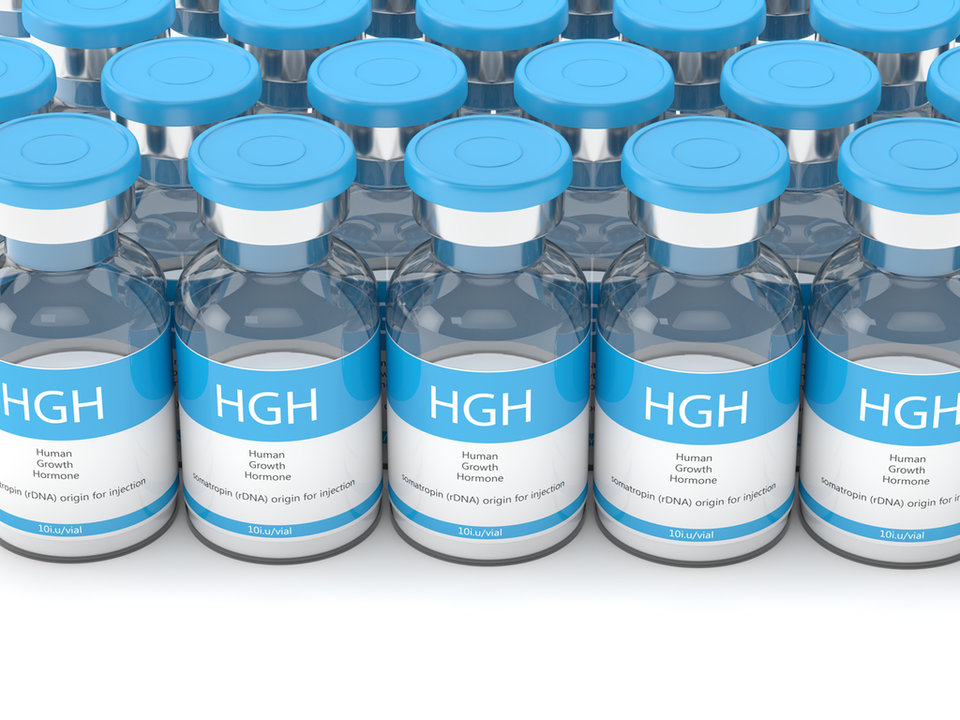Drug Development
Shooting up: what does the future hold for growth drugs?
Growth drugs hold huge potential for various unmet clinical needs, including foetal growth restriction. But for better or for worse, these drugs are also sought after as supplements. Abi Millar explores the latest trends and research in this field
In December last year, researchers at the University of Auckland in New Zealand announced they had discovered a new potential treatment for growth-restricted foetuses. Through injecting insulin-like growth factor-1 (IGF1) into the amniotic fluid, it may be possible to enhance growth in late pregnancy without harming the foetus.
Although this was a pre-clinical study carried out in sheep, the results pave the way for trialling the treatment in humans.
“Over the last 20 years or so we’ve been investigating different ways of giving IGF1 to the foetus,” says Professor Frank Bloomfield, director of the Liggins Institute at the University of Auckland and lead study author. “We’ve developed ways of giving it that are more and more clinically feasible.”
It could spell hope for the millions of pregnancies affected by foetal growth restriction every year. As many as 5%-10% of babies are born smaller than they should be, often due to problems with the placenta. (Other factors, such as maternal illness or poor maternal nutrition may also play a role.) While small size may not sound like too great an issue, it can bring serious health risks for the child.
“There can be long-term complications from being growth restricted, ranging from remaining small to increased risks of neurodevelopmental problems such as learning difficulties,” says Bloomfield. “There is also a whole host of long-term health outcomes associated with poor growth before birth, such as an increased risk of diabetes, heart attacks and strokes.”
Detection and cure
This treatment, which succeeded in improving growth rates in ovine foetuses, targets a major area of unmet need. Currently, there are no treatments capable of reversing foetal growth restriction, and although certain strategies (such as maternal nutrition and bed rest) can help, the problem can often be difficult to detect in the first place.
As well as developing a treatment, the New Zealand researchers are also looking to create a blood test for pregnant women, which could determine whether their baby is at risk.
“We monitored levels of a hormone produced by the placenta called C-type natriuretic peptide, and we found that the concentrations of this hormone in the mother’s blood were very closely correlated to the foetal oxygenation levels,” says Bloomfield. “That raises the very exciting possibility that a simple blood test could be a marker of foetal wellbeing.”
With just one injection a week, foetal growth improves with no increased adverse events
He adds that the IGF1 would need to be administered before the baby is born to make any difference.
“We know you can’t treat growth restriction after birth, once the baby’s born with all the attendant risks,” he says. “Obviously giving it directly to the foetus is invasive and difficult, so what we’ve developed is a way of injecting small doses of IGF1 into the amniotic fluid, which the foetus swallows every day. We’ve shown that with just one injection a week, foetal growth improves with no increased adverse events.

Frank Bloomfield with new mum Meeta Somaiya and baby Arjun
Other uses for growth drugs
This is not the first time IGF1 has been used in a clinical setting. A naturally occurring hormone, similar in molecular structure to insulin, IGF1 is closely related to human growth hormone (HGH). Both hormones play an important role in promoting muscle and bone growth.
“Growth hormone enacts on the liver to produce IGF1 and IGF1 acts on the body,” says Bloomfield, who stresses the mechanism is slightly different in foetuses. “IGF1 is used clinically in other situations, so we know it is a growth factor that can be given safely to humans and has been done so safely in other circumstances.”
In fact, the first growth hormone therapy was made available as early as the 1950s, for children with a deficiency of HGH. Following approval of somatropin (recombinant HGH) in 1985, the drug rapidly became available for a wide range of indications: chronic renal insufficiency (1993), Turner syndrome (1997), Prader-Willi syndrome (2000) and many others.
The first growth hormone therapy was made available as early as the 1950s
IGF1 injections, meanwhile, are mainly used as a treatment for Laron syndrome, a form of dwarfism. The drug has been tested for other conditions too, not least type 1 and 2 diabetes, although Genentech, which conducted these clinical trials, discontinued the programme in 1997 due to issues with diabetic retinopathy.
It has also has been indicated in cancer treatments, due to the fact that IGF-1 receptors are overexpressed in a variety of cancers. However, trials to date have proven unsuccessful.
Most recently, researchers at University College Cork in Ireland recruited 47 patients who had suffered heart attacks and injected very low doses of IGF1 into their heart. These patients showed improved heart performance, implying IGF1 may be useful for repairing damaged cardiac tissue. Larger trials are expected to follow.

Recreational uses
While growth hormones have shown promise across numerous indications, it is important to draw a line between clinical and recreational use. Since HGH helps build muscles, and is associated with youthful vitality (we naturally produce less of the hormone as we age), it has proven an attractive target for supplement manufacturers and consumers.
This was demonstrated most clearly in January 2013, when Sports Illustrated ran an article with some unusual doping allegations. The piece, timed to coincide with the Super Bowl, claimed that several pro-athletes were taking a product called deer antler spray, which contained IGF1 and purportedly aided muscle recovery.
IGF1 is used as a testosterone booster in bodybuilding circles and as an anti-ageing remedy
Later that year, the supplement supplier, Sports with Alternatives to Steroids (SWATS), was raided and ordered to shut down, with the Alabama attorney general citing “numerous serious and willful violations of Alabama’s deceptive trade practices act”. The company’s operators had styled their products as wonder drugs with a vast array of health and athletic benefits.
Five years after the demise of SWATS, deer antler sprays are still easily available for purchase, while IGF1 remains a popular supplement in its own right. It is used as a testosterone booster in bodybuilding circles and as an anti-ageing remedy.
One website claims: “Harvested from live deer, antler sprays and drops cause the body to build more muscle, improve endurance, and burn fat. They can even provide critical musculoskeletal support for crippling diseases like MS or severe arthritis.”
A complex subject
Claims of this nature, however, should not be taken at face value – and indeed, it seems the effects of IGF1 are too complex to justify its widespread usage.
Although the hormone does promote tissue regeneration, it is possible that high IGF1 levels may be a risk factor for cancer, and that downregulating the hormone (such as via fasting) is actually better for the body than enhancing it. Far more research is needed, however, if IGF1 enhancement is ever to be endorsed for the general population.
Studies like Bloomfield’s, however, do point towards growth hormones as an important candidate for future clinical trials. It is perhaps not too far-fetched to suggest we may see an array of IGF1-based treatments in the future.